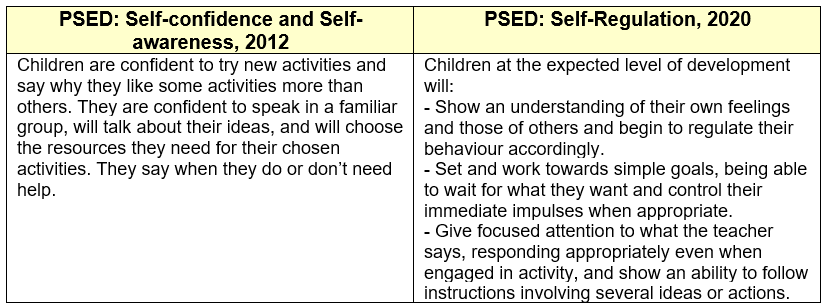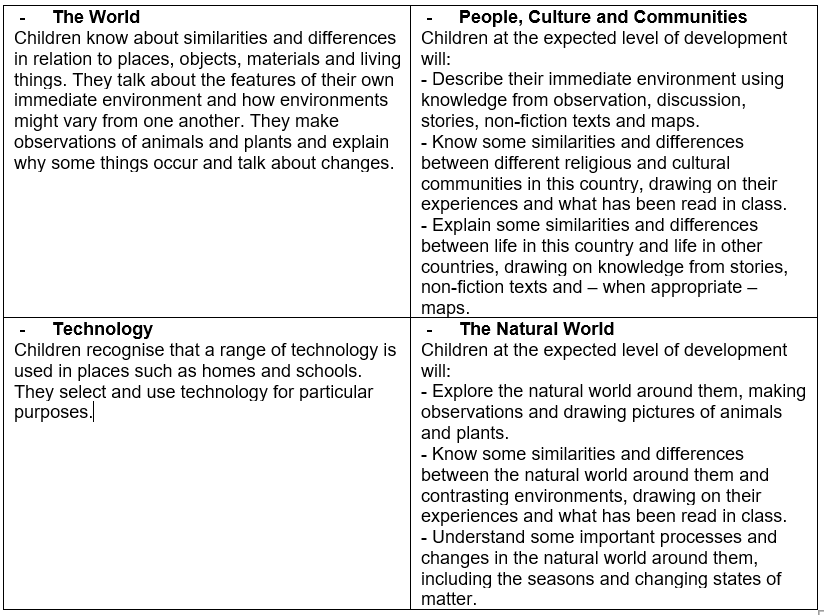What Has Changed in the New Development Matters?
7th September 2021
Written by The Classroom Secrets EYFS Team
It recognised that, in this important stage of education, children are on individual development pathways. Whilst the statutory requirements ensured all childcare providers delivered a set of common principles and commitments, Development Matters was the practical handbook. If the EYFS requirements were instructions, Development Matters was the pictures that made it possible to follow. The age bands provided an outline of what children could be achieving at that stage but those in ‘the know’ were aware that not all children would ‘tick’ all the statements before moving on to the next band.
The guidance was underpinned by four themes:
- A unique child
- Positive relationships
- Enabling environments
- Learning and development
It stated, ‘Development is not an automatic process. It depends on each unique child having opportunities to interact in positive relationships and enabling environments’ (p.2). The document, rightly so, considered all these themes to be interwoven and working together for children in EYFS.
In 2012, the Characteristics of Effective Learning were introduced. These focused on how children learn and not just what children learn, on process over outcome. The CoEL promoted skills such as perseverance, problem solving, finding alternative solutions, and a willingness to ‘have a go’. Practitioners were asked to report on these (along with attainment in the EYFS Profile) at the end of the Reception year.
In September 2020, the government released another (new) Development Matters to accompany its new statutory framework. This version maintains the previous overarching principles to shape practice in early years settings as well as keeping the seven areas of learning and the characteristics of effective teaching and learning, as they are now called. Furthermore, the broad ages and stages remain as does the appreciation that ‘the actual learning of young children is not so neat and orderly’ (p.3).
Readers will be forgiven for wondering how these two Development Matters differ then. Never fear! We have the answers for you right here…
In 2012, there were 17 aspects of learning across the three prime areas of learning and the four specific areas. Now, there are still 17 aspects of learning but how they feature across the areas of learning has changed, as we outline below:

Whilst the ‘Understanding’ aspect of Communication and Language has been combined with ‘Listening and Attention’ there is a new ‘Comprehension’ aspect of learning within Literacy which includes some of the previous statement, namely ‘Demonstrate understanding of what has been read to them by retelling stories and narratives using their own words and recently introduced vocabulary’.

Despite Physical Development still having two aspects of learning, the content of ‘Health and self-care’, from Development Matters in 2012, is now encompassed within ‘Managing self’ in the PSED strand – ‘Manage their own basic hygiene and personal needs, including dressing, going to the toilet and understanding the importance of healthy food choices.’
The debate over whether some of these skills and understanding should, in fact, have remained in Physical Development is a topic for another day but what is interesting about Development Matters 2020 is that Physical Development now purely focuses on the fine and gross motor skills of children.
Staying with PSED for the moment, the former ‘Self-confidence and self-awareness’ aspect of 2012 is now entitled ‘Self-regulation’. The new early learning goal, we believe, is much more in line with the skills and characteristics we want our children to be achieving.

This new ELG supports the ‘21st Century Skills’ initiative which focuses on preparing students for a rapidly changing world where, put simply, pupils need to get along with each other, be aware of their own feelings and regulate their behaviour as needed. Being able to work collaboratively, be creative, use their imagination and solve problems are all important attributes for our future adults - both in the workplace and society in general. Attributes (some might say but we couldn’t possibly comment) that have been lacking somewhat as the digital age has progressed.
The statutory framework in 2012 had ‘Numbers’ and ‘Shape, space and Measures’. Now, in the new version, the latter has been replaced with ‘Numerical Patterns’. The DfE are keen for children to develop ‘a strong grounding in number’ so, instead of being able to recognise numbers to 20, children will gain a firmer understanding, a secure base, of numbers up to 10. For example, comparing quantities up to 10, exploring patterns within numbers up to 10 and doubling and sharing quantities up to 10. Children will develop a deep understanding and really get to grips with the relationships between numbers to 10. Learning about 2D and 3D shapes, repeating patterns and exploring height, length, mass and capacity are now weaved into the aforementioned ‘Numbers’ and ‘Numerical Patterns’. Whilst the lack of SSM being identified in its own right unnerves us a little, we’re pleased it hasn’t disappeared completely. What is disappointing, however, is that aspects of SSM do not feature in the new ELG, perhaps that’s a debate for another day!
Finally now, we turn to the last two areas of learning. The two that don’t form part of the EYFS Profile. 12 aspects of learning are reported on, the remaining five are shown below.

For the creative folk amongst us, or even those who enjoy a meander alongside a babbling brook, the question may well be why these areas of learning in the Early Years Foundation Stage aren’t worthy of ‘Profile’ status. To that, we unfortunately don’t have the answers. Nevertheless, the areas of learning that include aspects of history, geography, RE, science, ICT/computing, design technology, art, drama and music remain excluded from the EYFSP reporting arrangements.
What is new for 2020, however, is the content and early learning goals.



What Are We Doing to Try Help You Out?
At the time of writing, our resources on the Classroom Secrets website are having a little move around. The ‘Shape, space and measures’ header, for example, might move or be removed, but please be assured that our resources will all still be available! We have games on positional vocabulary, capacity, and sequencing events, to name but a few, which will remain, just in a different place!
We have lots of resources, both on Classroom Secrets and Classroom Secrets Kids, based on addition and subtraction. The previous ELG for Number specifically stated: ‘Using quantities and objects, they add and subtract two single-digit numbers and count on or back to find the answer’ and whilst the new framework doesn’t quite mention this area of mathematics in such an obvious way it definitely it is at the crux of part of the new early learning goal: Automatically recall number bonds up to 5 (including subtraction facts) and some number bonds to 10, including double facts. So, it goes without saying, that these resources will stay too.
On their way to you shortly, we have some new resources related to subitising. This skill features heavily in the new framework and is when children can recognise quantities quickly without needing to count the separate items one at a time. In the meantime, use a dice or dominoes and encourage children to become familiar with the arrangements of spots for the different numbers.
Got any ideas for other ways we could help you this year? Drop us a message via our Twitter https://twitter.com/ClassroomSecLtd and we’ll see what we can do!
We look forward to hearing your feedback on the website’s new layout and the new resources we have coming soon.
Try us today!

